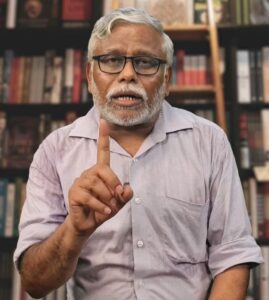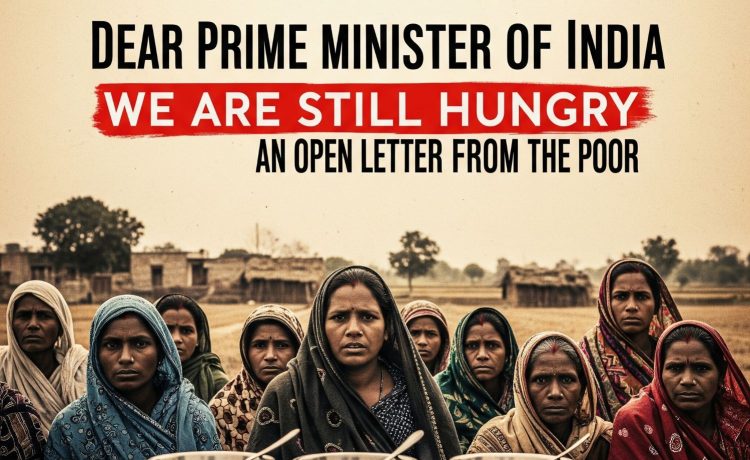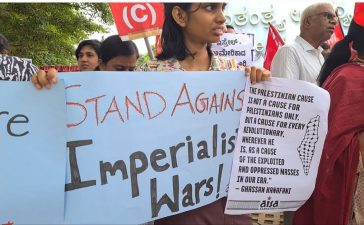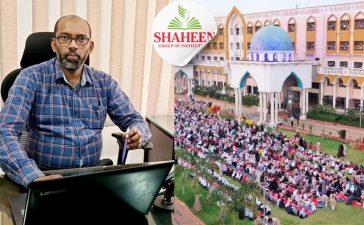Open Letter to the Prime Minister of India:
“If Jobs and Incomes Haven’t Risen, How Has Poverty Fallen to 5%?”
Respected Prime Minister,
As your government enters its eleventh year, a new narrative is being aggressively circulated: that under your leadership, India has not only united as a nation but has ascended to global spiritual and strategic dominance. While such lofty proclamations are paraded in domestic and international forums, serious questions about governance, truth, and the lived reality of India’s poor remain unanswered.
Recently, the World Bank and NITI Aayog have both claimed that extreme poverty in India has sharply declined — now allegedly below 5.3% of the population. These claims were strategically timed: the World Bank’s report came just as your government marked 11 years in office, and NITI Aayog’s similar statement was issued months before the 2024 general election.
But these declarations mask a deeper and more uncomfortable truth: how can poverty be falling when jobs are not being created, incomes have stagnated, and hunger is visibly rising?
The Illusion of Progress: A Manufactured Miracle
From 2011 to 2022, NITI Aayog claims multidimensional poverty dropped from 29% to 11%. However, this coincides with reports of rising rural distress, agricultural stagnation, and jobless growth. NSO’s 2017–18 Consumption Survey — which reportedly showed declining rural consumption for the first time in independent India — was suppressed. Only aggregated data from the 2022–23 survey has been released, with full transparency denied.
More troublingly, India’s rank in the Global Hunger Index fell from 67 (in 2011) to 105 (in 2023). Can a country where hunger is growing claim that poverty is shrinking?
India’s Deepening Inequality: A Tale of Two Nations
Your government promised to create 20 million jobs annually. Instead, mechanization, privatization, and corporatization — particularly of agriculture — have eliminated existing employment. Workers’ real wages have either stagnated or declined. Meanwhile, inflation has skyrocketed.
In 2010, a daily wage of ₹100 had a certain purchasing power. Today, a wage of ₹300 barely meets basic needs. How then can we believe poverty is falling if income hasn’t kept pace with the cost of living?
Moreover, according to scholar Santosh Mehrotra:
-
19 crore Indians earn less than ₹100/day (below the extreme poverty line).
-
14 crore earn ₹100–₹200/day.
-
12.7 crore earn ₹200–₹300/day.
That means 46 crore working Indians — over one-third of the population — earn less than ₹10,000/month. Even by conservative estimates, this translates to over 50% of India living in inhumane poverty, not 5% as claimed.
Government’s Own Schemes Acknowledge the Truth
The very design of your flagship food scheme, PM-GKAY, contradicts your poverty narrative. Why would the government extend free rations to 75% of rural and 50% of urban populations if only 5% are poor?
It is now clear: the official narrative is not aligned with the lived reality. Instead, it is curated for political optics — not policy reform.
Poverty is Political — Not Just Economic
Poverty is not just about lack of food or income. It is about the absence of power, ownership, and access to resources. It is rooted in systemic inequality — made worse by a model of development that prioritizes capital over communities.
While capitalist regimes treat poverty as a statistical inconvenience, socialist systems aim to redistribute resources and restructure the economy. India has long promised socialism in spirit but followed corporate-friendly capitalism in practice.
The Need for Truth and Transformation
Prime Minister, a responsible government must not shy away from hard truths. You cannot fight poverty by erasing the poor from your statistics. Nor can the “Operation Sindoor” narrative distract from your government’s failure to launch a credible “Operation Poverty Eradication.”
We urge you to:
-
Release full, transparent poverty and consumption data from NSO without manipulation.
-
Acknowledge and address the rising distress among rural workers, farmers, and urban poor.
-
Abandon false optics and embrace real policy reform that redistributes wealth, empowers labour, and builds inclusive growth.
Call to Action for Citizens and Media
To every citizen, journalist, and policymaker reading this: ask the fundamental question — can we allow a country where nearly half the population struggles daily to be whitewashed into a 5% poverty story?
Raise your voice. Demand truth. Challenge propaganda.
Authored by Professor Shivasundar
(Translated and formatted in News Style for public awareness and policy engagement)

✅ Key Quotes
-
“You cannot end poverty by erasing the poor from statistics.” – Shivasundar
-
“If poverty is truly down to 5%, why do 60% of Indians still need free food rations under PM-GKAY?” – Economist Rebuttal to NITI Aayog
-
“Poverty is not just an economic number; it’s a measure of dignity, opportunity, and power.” – Jean Drèze, Economist
-
“The story of Indian development is one of rising GDP and falling incomes for the bottom half.” – Santosh Mehrotra, Labour Economist
-
“Data without transparency is propaganda. Suppressed surveys tell a story statistics can’t hide.” – IndiaSpend Editorial
📊 Authentic References & Statistics
| Source | Claim / Statistic |
|---|---|
| World Bank (June 2024) | Claimed India’s extreme poverty dropped to 5.3% |
| NITI Aayog (Feb 2024) | Claimed 25 crore people lifted from poverty (2011–22); MPI fell from 29% to 11% |
| Global Hunger Index (2023) | India ranks 111 out of 125 countries — down from 67 in 2011 |
| NSO (2017–18, leaked) | Rural consumption dropped for the first time since independence |
| NSO (2022–23, summary only) | Average monthly rural spending: ₹3,773; urban: ₹6,495 |
| PM-GKAY Scheme (2021–2024) | 75% of rural, 50% of urban Indians are classified as needing free rations |
| Santosh Mehrotra (2023 Study) | 46 crore Indians earn < ₹10,000/month |
| Labour Force Participation Survey (2018–19) | Unemployment highest in 45 years (data withheld before 2019 election) |
❓ Key Q&A for Public Awareness
Q1: Is it true that poverty in India has dropped to below 5%?
A: Official claims by World Bank and NITI Aayog suggest so, but these are based on incomplete, selectively published, or methodologically altered data. Independent economists strongly disagree.
Q2: Why are poverty figures contested?
A: Because data from crucial surveys (e.g., NSO Consumption Expenditure Survey 2017–18) was suppressed, and later versions changed definitions, making year-to-year comparison impossible.
Q3: What do government schemes say about actual poverty levels?
A: PM-GKAY itself covers over 800 million Indians. If only 5% are poor, why are 60% receiving food relief? This contradiction exposes the disconnect between data and reality.
Q4: Have incomes increased for the poor?
A: No. Studies show real incomes have stagnated or declined, particularly for casual labourers, farmers, and informal workers.
Q5: What has been the impact of Modi-era policies on poverty?
A: Policies like demonetisation, GST, and farm deregulation worsened rural distress and increased economic inequality — especially after the COVID lockdowns.
🗣️ Key QUOTES
“A country is not judged by the height of its towers, but by the dignity of its poorest citizen.”
“You promised Sabka Saath, Sabka Vikas — but millions still wait for a roof, ration, and rights.”
“We write not out of anger, but out of despair. This is our last democratic plea.”
“Your silence on hunger statistics is louder than any Independence Day speech.”
“You call us anti-national for asking questions. We call it patriotism to demand justice.”
“How many farmers must die before policy becomes empathy?”
“Poverty cannot be erased by changing the definition. The truth is not anti-national.”
Recommended Reading/References
-
Dr. Santosh Mehrotra – Labour, Employment and Economic Growth in India
-
Jean Drèze & Amartya Sen – An Uncertain Glory: India and its Contradictions
-
IndiaSpend Reports – www.indiaspend.com
-
Oxfam India Reports – Survival of the Richest (2023)
-
CPHS (CMIE Household Survey Data) – www.cmie.com
-
World Inequality Lab – India Inequality Report 2022
![]()











